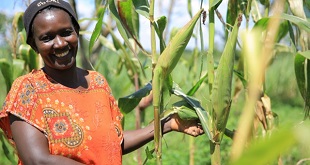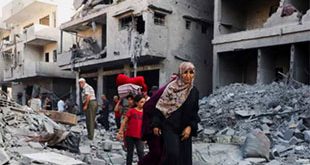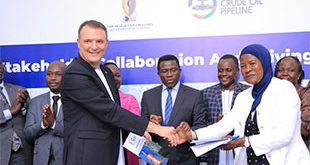At Kyankwanzi, we only allowed the Press at the opening ceremony and the closing ceremony. During the rest of the time (this time, from 11th to 18thof January, 2013), we were engaged in very serious discussions about a very large number of topics confidentially. In the end, we passed Resolutions which were published. The Daily Monitor newspaper may not even have published those Resolutions – deliberate conclusions of the NRM’s Parliamentary Caucus Retreat.
Instead, they manufacture a lie or bring issues totally out of context. I cannot, nevertheless, be provoked into answering the lies of such schemers in order to “clarify” because those were confidential discussions. As time passes, Uganda will grow more immune to this endless blackmail and provocation. As for the schemers, there is a time for everything, it says in the Book of Ecclesiastes Chapter 3: 1-8: “…There is a time for everything, and a season for every activity under the Heavens: a time to be born and a time to die, a time to plant and a time to uproot…..a time to love and a time to hate, a time for war and a time for peace”
We have seen such characters before. On the 23rd of January, 1973, for instance, I was on a clandestine mission with two of my colleagues in Mbale against Idi Amin’s regime. We were in Maumbe’s house, House No.49, Maluku Estate. At around 1500 hours, we were suddenly surrounded by about 15 military Police of Idi Amin. I fought my way out of that encirclement but, unfortunately, my two colleagues were killed. We also killed two of the Military Police.
The schemers and the enemies were soon at work. “Museveni is the one who killed his colleagues. If he did not kill them, why did he not die himself? Why did he escape alive?” All those schemes never stopped the NRM from winning victories. We are now much better positioned to defeat those schemes compared to 1973, when we were much weaker but as greatly motivated as we are today. I wish good luck to the schemers.
Nevertheless, I have now decided to write something because the Sunday Monitor of the 3rd of February, 2013, published an interview by Dr. Besigye. The aim of the Monitor paper is always to demean the achievements of the NRM and divert Ugandans from their core interests. Now that the whole of Uganda is peaceful, we have adequate electricity, we (the NRM) discovered the oil for the Ugandans, we have a massive educated force, etc., this is too much for the Monitor newspaper. They must promote chaos through talk of coups, lies about the Prime Minister and Ministers taking bribes from oil companies, recall of Parliament, Museveni killing the late Nebanda, etc. Monitor newspaper you will fail.
Since, however, Dr. Besigye gave an extensive interview in that enemy paper attacking the achievements of NRM over the last 43 years of struggle for liberation and the building of Uganda in the last 27 years of that time, I will answer him for the sake of the young people who do not know that history well.
I will start with his last point while responding to the Monitor Interviewer who asked Dr. Besigye the following question: “But the NRM has as well grown the economy. President Museveni revealed at the same function that the economy is growing 14 times annually?” Of course, this question had itself a mistake. The economy is now 14 times bigger than it was in 1986. It is now 50 trillion shillings while in 1986, it was 3.5 trillion shillings. In dollars, it is US$ 20 billion. In the 1990s only the economy of Kenya was US$ 12 billion in East Africa. We have now surpassed that level. By the end of this Financial Year, the economy will be 58 trillion shillings or about US$ 22 billion in spite of the slower rate of growth created, partly, by the slower global rate of growth.
Dr. Besigye answered the interviewer by saying that the NRM has failed to live up to Point Number 5 of the NRM Programme of building an integrated self-sustaining economy – that is, creating an economy with inter-sectoral linkages, e.g. agriculture producing raw materials for industry and industry producing inputs for agriculture, etc. It is true that the NRM has not completed the job of transformation of the economy, mainly, for two reasons: the very low base from which we started and sabotage by some political actors, especially, those who, eventually, joined FDC and other opposition groups. I remember very well that, for instance, many of those who opposed Bujagaali hydro power project were individuals who, eventually, joined the opposition groups.
Bujagaali is now finished, but late by about 15 years. That is why we will no longer tolerate those internal saboteurs or those from the opposition opposing industrialization. Nevertheless, that sabotage and the low base we started from notwithstanding, the progress in industrial production can only be denied by somebody who is pathologically biased. The share of industry to GDP is now 26.4% while in 1986, it was 9.9% of GDP. This is 26.4% of an economy that is 14 times bigger than it was in 1986. The industrialization of the economy under NRM started with the rehabilitation of industries that were producing consumer goods: beers, sodas, soap, sugar, tea, etc.
Before 1986, all these were being imported from Kenya, they were in great scarcity and they were being smuggled into the country. The smuggling (known as magendo) meant that the State was not getting taxes on these goods. Uganda is not only self-sufficient in most of these goods but is, actually, exporting a lot of them to the neighbouring countries. The value of the exports of industrial goods is now US$ 509 million. Then, there is the production of intermediate goods (goods that are needed as inputs into other industries) such as cement and steel-bars (mitayimbwa) for construction. The relevant figures are: the production of cement in 1986 was about 76,400 metric tonnes per annum; the production is now 2.4 million met. tonnes per annum.
The production of mitayimbwa was 832 metric tonnes per annum in 1986. It is now about 240,000 metric tonnes per annum. The production of car batteries in 1986 was 4,000 batteries per annum. The production is now 170,000 batteries per annum. Many of these products are being exported to the neighbouring countries. Uganda is now exporting industrial products. Then, there is the value addition to agricultural products. Let us take the example of milk. By 1986, all processed milk was coming from outside (Kenya, Denmark, etc.). Today, Uganda is not only self-sufficient in processed milk products but she is actually exporting quite a bit of these, not only to the region but internationally.
Recently, we have been negotiating with India to accept our processed milk. There are scientific innovations and inventions – banana starch, juices, machine-parts and machines, the electric car, etc. Now that we have, finally, overcome the sabotage of the groups people like Dr. Besigye belong to by regaining the initiative in electricity, nothing will stop us. Uganda is now generating (installed capacity) 828 MW compared to 60 MW in 1986. We would be much further if it was not for the sabotage of the said factions.
 The Independent Uganda: You get the Truth we Pay the Price
The Independent Uganda: You get the Truth we Pay the Price



